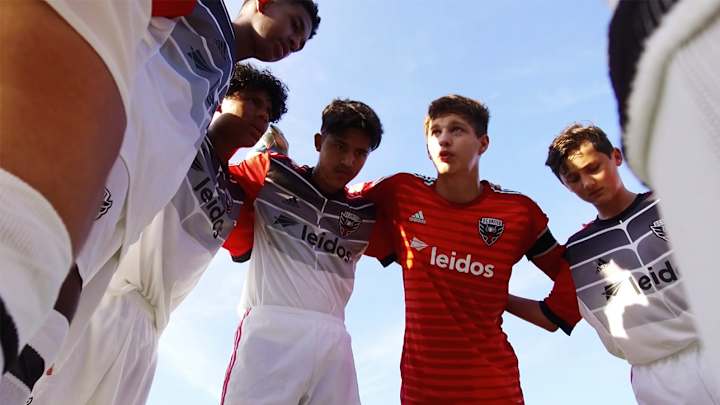The International Champions Cup Futures Youth Soccer Tournament Has Lofty Goals

Organizers of soccer’s newest youth tournament are not shy about their ambitions.
“The Little League World Series was a huge inspiration for us,” said Daniel Sillman, the CEO of Relevent Sports, which launched the International Champions Cup Futures event taking place this week. Relevent executive chairman Charlie Stillitano was even more direct: ”There’s nothing like the Little League World Series in soccer; that’s what we are trying to create,” he said.
This summer, they invited top U-14 players from eight European academies, eight MLS development academies, and eight U.S. state all-star teams to compete in a World Cup-style tournament in Florida. The quarterfinals air Friday on ESPNU, with a final Sunday afternoon to be shown on ESPN2. In coming years, there could be girls’ divisions, South America could be represented, early rounds could be played across the country and the globe, and more. (If you’re wondering why they chose U-14, it’s the first age at which teams exclusively play 11-on-11, and right before players reach the pro level.) “We’ll talk to teams and kids and learn from this year and improve it,” Sillman said. “This is just the beginning. We think we can build the biggest and most impactful youth soccer tournament in the world.”
At the same time, the world’s biggest youth tournament is just part of Relevent’s plan. Its main project is the grown-up International Champions Cup, an offseason tournament featuring the world’s biggest clubs. This year’s event will bring together 18 teams, including Real Madrid, Manchester United and Bayern Munich. But there’s also a women’s tournament, fan experiences in two cities, a celebrity game and so on. So even if Futures doesn’t take the world by storm, it can be a useful asset for an overall business plan.
If it gets more kids playing soccer and excited about soccer, that’s good for the bottom line. If putting on a world-class event for European academies strengthens bonds with those clubs’ senior teams, ensuring their future participation, that’s good, too. And if it plays a small part in improving the quality of American talent going forward, that will only increase interest in the sport as well.
So far, the tournament has shown how much farther the U.S. sides have to go. At the start of competition, the 24 teams were divided into eight groups, each with one European team, one MLS team, and one state all-star team. The international entrants topped five of the eight groups. “The MLS and American teams have made huge strides over the last 10 years in youth development, but there’s still a difference,” Sounders youth coach Dan Lock said. “They have 100 years on us in terms of soccer culture and development. We’re still playing catch-up.” His group was one of the three American teams to advance, though, thanks in part to two goals from Antonio Herrara, who is playing up a year and showing a bit of what the future of American soccer might have to offer.
The Sounders’ quarterfinal opponent is Chelsea, which dispatched its groupmates by a combined tally of 7-1. Still, coach Ian Howell said the trip has been a fruitful one, if only because it has given his players a chance to play against some new teams and to begin getting used to playing on television.
“This is already the leading tournament in its category,” said Chris Brown, who leads the only remaining state team, Arizona. Friday, they’ll face the New York Red Bulls, with the winner possibly entering the semis as the only American squad standing. As U.S. teams improve in the years to come, Brown only expects the viewership to grow as well.
“There’s no doubt,” he said. “There’s a huge grassroots following for soccer now. It’s just getting it right in terms of communication and coverage. I think the numbers would follow.”
